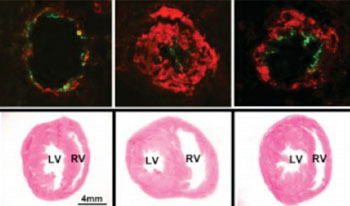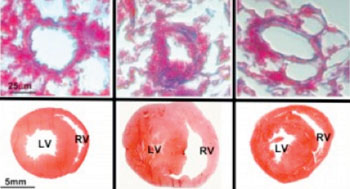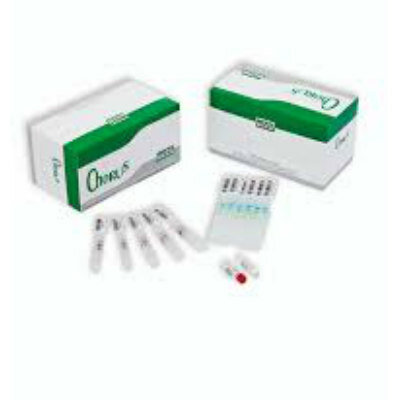Apolipoprotein A-1 Mimetic Peptide Reverses Pulmonary Hypertension in Rodent Models
By LabMedica International staff writers
Posted on 15 Sep 2014
A small peptide that mimics the activity of apolipoprotein A-1 (apo A-1), the main protein component of the high density lipoproteins (HDL), counteracted the effects of oxidized lipids and alleviated symptoms of pulmonary arterial hypertension in a population of laboratory animals.Posted on 15 Sep 2014
A pathogenic role for oxidized lipids such as hydroxyeicosatetraenoic and hydroxyoctadecadienoic acids has been well established in vascular diseases including pulmonary arterial hypertension. Apolipoprotein A-I mimetic peptides, including 4F, have been reported to reduce levels of these oxidized lipids and improve vascular disease. However, the roles of oxidized lipids in the progression of pulmonary arterial hypertension and the therapeutic action of 4F in pulmonary arterial hypertension have not been well established.
Investigators at the University of California, Los Angeles (USA) studied two different rodent models of pulmonary hypertension: a monocrotaline rat model and a hypoxia mouse model. In addition, they examined lung tissues and serum from human patients with pulmonary arterial hypertension.
Results published in the August 26, 2014, issue of the journal Circulation revealed that plasma levels of hydroxyeicosatetraenoic and hydroxyoctadecadienoic acids were significantly elevated in the rodents with pulmonary hypertension. 4F treatment reduced these levels and alleviated preexisting pulmonary hypertension in both rodent models.
MicroRNA analysis revealed that microRNA-193-3p (miR193) was significantly down regulated in the lung tissue and serum from both patients with pulmonary arterial hypertension and rodents with pulmonary hypertension. In vivo miR193 overexpression in the lungs abolished preexisting pulmonary hypertension and resulted in down regulation of lipoxygenases and insulin-like growth factor-1 receptor. 4F restored pulmonary hypertension-induced miR193 expression via transcription factor retinoid X receptor alpha.
These results established the importance of microRNAs as downstream effectors of an apolipoprotein A-I mimetic peptide in the reversal of pulmonary hypertension and suggest that treatment with apolipoprotein A-I mimetic peptides or miR193 may have therapeutic value.
“Our research helps unravel the mechanisms involved in the development of pulmonary hypertension,” said senior author Dr. Mansoureh Eghbali, associate professor of anesthesiology at the University of California, Los Angeles. “A key peptide related to HDL cholesterol that can help reduce these oxidized lipids may provide a new target for treatment development.”
Related Links:
University of California, Los Angeles















